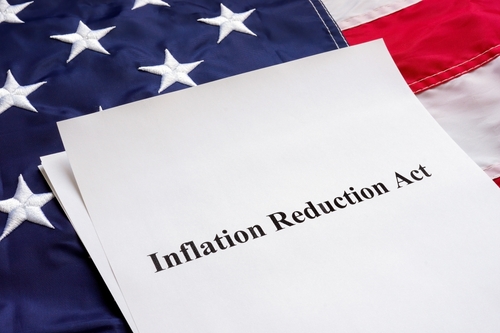Marking the one-year anniversary of the passage of the Inflation Reduction Act (IRA), the Internal Revenue Service (IRS) outlined some of its achievements toward its goals of delivering world-class service, upgrading its technology, and ensuring high-income taxpayers, large corporations, and complex partnerships pay taxes owed.

Among the achievements is the Paperless Processing Initiative, a program launched this year through which the IRS scanned 225 times more forms than they did in 2022. The IRS scanned about 849,000 forms this year, including about 481,400 Forms 940, 304,000 Forms 941, and 64,000 Forms 1040 – some 225 times more forms than were scanned the previous year.
The agency also improved its service in the 2023 tax filing season. Specifically, it achieved an 87 percent level of service on its main taxpayer help line. It did this by taking 3 million more calls, cutting phone wait times to three minutes from 28 minutes, serving 140,000 more taxpayers in-person, digitizing 80 times more returns than in 2022 through new scanning technology, cleared the backlog of unprocessed 2022 individual tax returns with no errors, launched two new digital tools, and enabled a new direct-deposit refund option for taxpayers with amended returns.
In addition, the IRS launched an online portal to allow businesses to file Form 1099 series information returns electronically. These forms previously needed to be submitted through the mail. Small business owners often prepare their own taxes, rather than hire professional preparers, and this new tool is saving thousands of small business owners time and money.
Further, the IRS expanded the availability of its customer callback option to cover up to 95 percent of callers seeking live assistance. The main goal of the customer callback feature is to enhance the taxpayer’s experience by giving them more options when the call volumes are high. The agency also introduced new voice and chatbots to help taxpayers with a wide range of issues, including securing account transcripts, getting answers to questions about balances due and getting help from the Taxpayer Advocate Service.
Also, the IRS expanded its in-person service to better reach rural, underserved taxpayers. To do this, it hired nearly 700 employees to open or reopen 42 Taxpayer Assistance Centers across the country. It has also introduced pop-up taxpayer assistance centers, giving taxpayers from hard-to-reach areas an opportunity to meet face-to-face with IRS customer service representatives.
.
Finally, the IRS made strides to ensure that high-income taxpayers pay the taxes they owed. In recent months, IRS Criminal Investigation has closed a lengthy list of cases in which wealthy taxpayers have been sentenced for tax evasion, money laundering, and filing false tax returns. Instead of paying taxes owed, these tax evaders spent money owed to the government on gambling, vacations, and luxury goods.
In addition, the IRS closed about 175 delinquent tax cases for millionaires, generating $38 million in recoveries. IRS will continue to pursue millionaires who do not pay their taxes as the agency ramps up enforcement capabilities through the Inflation Reduction Act.
For example, the IRS recently identified about 100 high-income individuals claiming benefits in Puerto Rico without meeting the residence and source rules involving U.S. possessions. These wealthy individuals are attempting to avoid U.S. taxation on U.S. source income, and IRS expects many of these cases to proceed to criminal investigation. The IRS is also cracking down on millionaire non-filers, who, instead of filing their taxes and paying taxes owed, these individuals used the money to make lavish purchases. In one case, an individual used funds owed to the government to purchase a Maserati and Bentley.